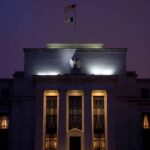
With traditional real estate investments stalling out, developers are looking to build around future manufacturing hubs.
If you build it, they will come.
This is a slight misquote of a line from Field of Dreams. In the film it says “He’ll come,” but James Earl Jones (now deceased) says this: “People will come.” He repeated the phrase about six times to convince his protagonist, Kevin Costner, to continue building the baseball field on his farm. And he did! The phrase has since entered the common American vocabulary to mean that if you go out of your way to build or create something that has a market, you won’t need to look for clients or customers.
From this week’s Wall Street Journal article:
U.S. and foreign companies are spending about $500 billion to build new factories in the U.S. to make electric vehicles, semiconductors and other products, according to real estate analytics firm Green Street.
Investors are planning to buy or build warehouses, hotels, office buildings and apartments near new factories across the Sun Belt and Rust Belt, where most of the so-called onshoring plans are underway. They are betting that as the new manufacturing hubs come online and create jobs, the increased jobs will boost demand for housing, shopping and other things, creating a “multiplier effect.”
To be clear, “build it yourself” may not be the perfect metaphor here. It remains to be seen whether demand for electric cars or American-made semiconductor chips will be robust. But real estate investors are betting that it will be, and their money is on the line.
Speculators have tripled the price of farmland, said Bill Rawls, mayor of Brownsville, Tennessee. The town of 10,000 people is about 15 miles from Blue Oval City, a $5.6 billion electric pickup truck factory being developed by Ford Motor Co and South Korean battery maker SK On.
The Tennessee plant has also had delays — Ford recently said truck production won’t start until 2027 — but its eventual 6,000 workers are expected to spur demand for new homes and retail in the region, as well as outside Memphis, 30 miles away.
Developers have proposed a massive mixed-use development that would be unprecedented for Brownsville, including a 350-unit apartment and retail complex, Rawls said. But deals have been slow to move forward, with some developers waiting for interest rates to fall before breaking ground.
“It’s not a matter of if, it’s a matter of when,” Rawls said.
Meanwhile, actual factory construction is progressing at an astonishing pace across the country. Clean Investment Monitor “In the U.S., $284 billion in new investment was made in the manufacturing and deployment of clean energy, clean vehicles, electrification of buildings and carbon management technologies over the past year, up 36% from the previous year. A record $76 billion of this investment will occur in the second quarter of 2024, up 27% from the same period in 2023.”
In other words, Fairfield, Ohioprocesses nickel and cobalt for use in advanced battery production. US industrial policy means that more traditional manufacturing also takes place in the US. New York Factory The company plans to manufacture cars for a high-speed rail line connecting Los Angeles and Las Vegas.
Yes, build the factories and the investments will come. Just like they said in “Field of Dreams.”








